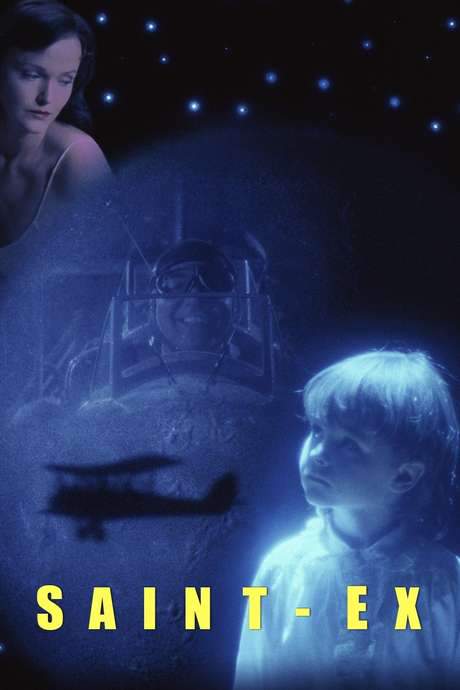
The Spirit of St. Louis
Year: 1957
Runtime: 135 mins
Language: English
Director: Billy Wilder
Charles Lindbergh battles financial and engineering hurdles as he designs and builds the Spirit of St. Louis, determined to prove a solo pilot can cross the Atlantic. The film follows his relentless pursuit of the historic 1927 New York‑to‑Paris flight, showcasing his courage, ingenuity and personal sacrifice.
Warning: spoilers below!
Haven’t seen The Spirit of St. Louis yet? This summary contains major spoilers. Bookmark the page, watch the movie, and come back for the full breakdown. If you're ready, scroll on and relive the story!
The Spirit of St. Louis (1957) – Full Plot Summary & Ending Explained
Read the complete plot breakdown of The Spirit of St. Louis (1957), including all key story events, major twists, and the ending explained in detail. Discover what really happened—and what it all means.
Charles A. “Slim” Lindbergh eyes the clock on May 19, 1927, and the hum of Roosevelt Field above Long Island feels louder than the engines he has known. He sits in a hotel room waiting for the weather to clear, while reporters cluster below and his nerves keep him awake. The burden of history hovers over him, and the film invites us to see the man behind the myth as he quietly rehearses the long night ahead. The scene then folds back in time, inviting us to ride along with the pilot on a memory-laden journey that stretches from the midwestern skies to the bright lights of Paris, and back again to the cheering crowds of New York.
In a sweeping flashback, Lindbergh revisits his days as an airmail pilot and the perilous early tests that shaped his daring plan. He recalls landing a weary de Havilland biplane at a small airfield to refuel on the way to Chicago, only to confront a sudden snowstorm that closes the landing field. With fuel running low and danger pressing in, he must bail out and survive a treacherous storm before trudging by train toward the city. The memory deepens as he retrieves mail from the crashed aircraft and learns that two airmen have perished while pursuing the Orteig Prize—the prize that promises a nonstop flight from New York to Paris. The weight of that loss grounds his resolve and crystallizes his appetite for a monumental challenge.
A telephone call to Columbia Aircraft Corporation in New York becomes the first turning point in the plan. Lindbergh outlines a bold dream: to fly the Atlantic in forty hours in a stripped-down, single-engine airplane, without the weight of radios or extra gear. The backers listen and dub the venture Spirit of St. Louis, a name that carries the promise of innovation and perseverance. Yet Columbia insists on choosing the pilot, and the door to the big prize seems to close. Undeterred, Lindbergh presses onward and seeks new allies, moving next to Ryan Airlines in San Diego, where the company’s president Frank Mahoney steps into the tale. He promises to design and build a suitable plane in a tight, ninety-day window, a deadline that seems almost impossible to meet.
With Donald Hall as Ryan’s chief engineer, the design team begins work on a lean, ultralight monoplane. The goal is to minimize weight while maintaining reliability, a philosophy that demands drastic measures: no radio, no parachute, no heavy equipment—only the essentials needed to navigate by dead reckoning. The engineers and factory workers push around the clock, driven by the belief that speed and simplicity will trump excess. The schedule becomes a race against time, and in a tense moment Lindbergh learns that the clock has its own bite: the project wraps in sixty-two days, not the ninety originally planned. By the time the Spirit of St. Louis is ready, the rival attempt by Nungesser and Coli has already started and ended in tragedy, underscoring how close history often sits to catastrophe.
Before the flight, the plane is wheeled into position, and Lindbergh prepares for departure with meticulous care. He steps aboard The Spirit of St. Louis, a craft that defies expectations with its sparse cockpit and practical design. He arranges the fuel—450 gallons stored in careful balance—and braces himself for a six-hour test of nerves before the real voyage begins. A small moment highlights the human side of this machine: a young woman at the field offers her compact mirror to help him read the magnetic compass, a tiny act of assistance that glints against the gravity of the mission. In a final, almost secret, gesture, Mahoney slips a Saint Christopher medal into the bag of sandwiches for the flight, a superstition wrapped in good luck.
The takeoff is a gritty tableau of grit and grit again: the runway is muddy, power lines loom, and treetops threaten the early lift. Lindbergh powers into the air, watching the world shrink beneath him as he shifts fuel tanks every hour to keep the aircraft properly balanced. He has not slept in twenty-eight hours, and the fatigue threads through his thoughts as he recalls times spent dozing on railroad tracks or nestled in a windmill’s shadow. A tiny life intersects with a grand odyssey—the memory of a Harley-Davidson bike he once owned and traded for his first aircraft surfaces as he recalls the simple joys that now seem distant.
Across the Atlantic, the voyage grows heavier and more fragile with each passing hour. Ice forms on the wings, and the engine falters, forcing Lindbergh to improvise. He restarts the engine, and the aircraft steadies, though other instruments falter: the compasses misbehave, and he must navigate by the stars in a test of skill and nerve. As the hours stretch into the night, the pilot battles fatigue and the isolation of the endless sea. Dawn arrives with relief, only to thrust him into another challenge: the plane drifts toward an uncertain course, forcing him to draw strength from memory and determination.
The flight becomes a mosaic of small miracles and stark dangers. He notices a seagull in the distance and senses land approaching, even as he longs for a sign of safe passage. A motorcyclist below serves as a distant reminder of the road he left behind, and Lindbergh’s mind wanders to his own Harley and the world he left for the skies. After nearly twenty hours of crossing, the aircraft finds a rough balance, and land appears not as a distant certainty but as a tangible possibility. He follows the Seine toward Paris, tracing the river’s course into the heart of France as night falls and the lights of the city begin to glow.
Le Bourget Airfield comes into view, and Lindbergh’s approach is a blur of confusion and awe. Spotlights swirl overhead, and he becomes momentarily disoriented by the theater of a landing that feels like a dream made real. He gathers his courage and pilots toward the runway, whispering a stark, desperate prayer: “Oh, God, help me!” The Spirit of St. Louis touches down and comes to a halt, and the field erupts in a flurry of flash powder, cameras, and triumph. He is carried from the cockpit by the rapture of a crowd that numbers in the hundreds of thousands, a prelude to the even larger march that awaits him back in New York.
Back in New York, a ticker-tape parade unfolds as millions of spectators line the streets to greet the hero who has bridged continents with a single, fearless flight. The city bursts with relief, celebration, and a sense of national pride that seems to rise like steam from the pavement. The world has changed in a moment, and James Stewart embodies the quiet, unassuming courage that made the journey possible. The story of Lindbergh’s flight—its peril, its grace, and its near-miraculous practicality—remains a testament to human ingenuity, perseverance, and the power of a single, deliberate choice to reach beyond the horizon.
Frank Mahoney and Donald Hall appear as pivotal figures in this telling, their decisions shaping the course of a flight that would become a defining moment in aviation history. The narrative keeps a steady, respectful balance between the technical challenges and the emotional weight of a man who dared to trust his own judgment against the odds, inviting viewers to appreciate both the science and the soul of flight. The voyage is not simply a chronicle of a great achievement; it is a study in focus, restraint, and the quiet confidence that can carry a person—what some would call a legend—through the most improbable skies.
Last Updated: October 09, 2025 at 11:15
Unlock the Full Story of The Spirit of St. Louis
Don't stop at just watching — explore The Spirit of St. Louis in full detail. From the complete plot summary and scene-by-scene timeline to character breakdowns, thematic analysis, and a deep dive into the ending — every page helps you truly understand what The Spirit of St. Louis is all about. Plus, discover what's next after the movie.
The Spirit of St. Louis Timeline
Track the full timeline of The Spirit of St. Louis with every major event arranged chronologically. Perfect for decoding non-linear storytelling, flashbacks, or parallel narratives with a clear scene-by-scene breakdown.

Similar Movies to The Spirit of St. Louis
Discover movies like The Spirit of St. Louis that share similar genres, themes, and storytelling elements. Whether you’re drawn to the atmosphere, character arcs, or plot structure, these curated recommendations will help you explore more films you’ll love.
Explore More About Movie The Spirit of St. Louis
The Spirit of St. Louis (1957) Scene-by-Scene Movie Timeline
The Spirit of St. Louis (1957) Movie Characters, Themes & Settings
The Spirit of St. Louis (1957) Spoiler-Free Summary & Key Flow
Movies Like The Spirit of St. Louis – Similar Titles You’ll Enjoy
Saint-Ex (1996) Plot Summary & Ending Explained
The Spirit of Notre Dame (1931) Spoiler-Packed Plot Recap
Spirit of the Marathon (2008) Story Summary & Characters
The Tarnished Angels (1957) Full Movie Breakdown
Saint-Exupéry (2024) Movie Recap & Themes
The Wings of Eagles (1957) Ending Explained & Film Insights
Spirit of Youth (1938) Detailed Story Recap
St. Louis (2019) Spoiler-Packed Plot Recap
China Clipper (1936) Full Movie Breakdown
True Spirit (2023) Complete Plot Breakdown
The Flight of the Eagle (1982) Full Summary & Key Details
The Spirit (1987) Plot Summary & Ending Explained
Gallant Journey (1946) Plot Summary & Ending Explained
The Spirit (2008) Plot Summary & Ending Explained
Spirit of the Eagle (1991) Detailed Story Recap

















